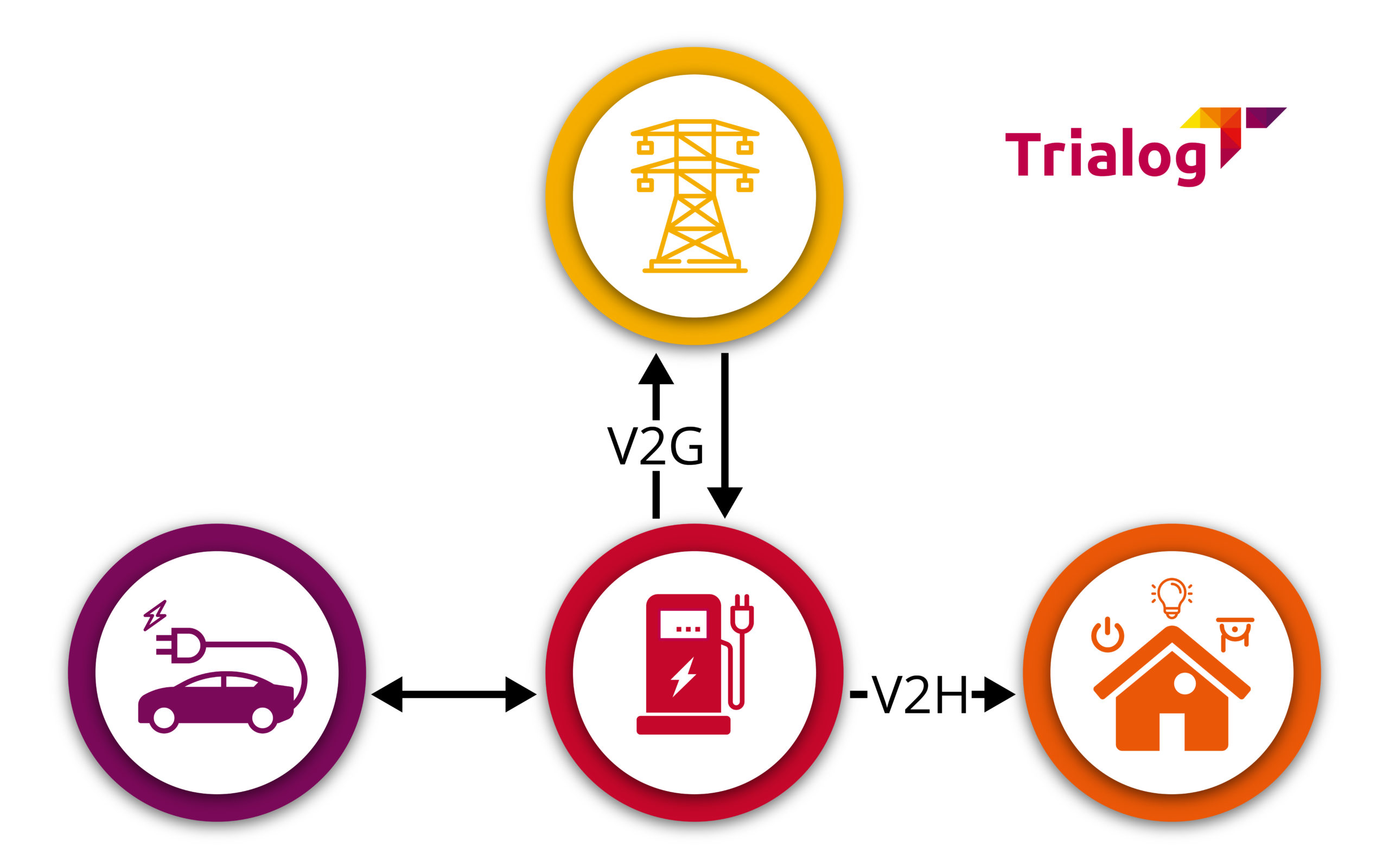The rapid development of Electric Vehicles (EVs) may in the near future threaten the stability of the electric grid. In order to deal with this issue, new charging technologies offer to modify the load of EVs to provide services to the grid, enabling it to reduce their impact. In the past few years, Trialog has been investigating these possibilities through several projects, using its expertise in standardisation, interoperability and cybersecurity.
An heavy load on electric grid
According to the EV manufacturers, the number of EVs in France is expected to rise drastically, reaching 1 million entities in 2023 and 7 to 16 million in 2035 . This rise could cause issues on the electric distribution grid. EV imposes heavy loads when charging, which is increased even more with the development of fast charging. Congestion of the grid could therefore become more frequent, in a context where the development of unpredictable renewable energy sources brings its own constraints.
On the level of the transportation system, the integration of EV is not expected to cause major issues. An RTE report from 2019 points out that, on a global level, the French electric system is fully able to integrate the increasing number of EVs. The foreseen impacts on the 2035 horizon are a total consumption of 40 to 65 TWh per year, with peaks up to 8GW concentrated on the 7-9 pm time slot.
On the distribution system, the heavy loads imposed by EV charging may cause issues such as congestion in local areas and on short timescales . This new mode of consumption, along with the development of distributed renewables, is somehow in contradiction with the way the distribution grid was initially conceived. It contributes to the transformation of the grid, from a centralised system to a more distributed one, which requires stronger local meshing.
A solution centered around Electric Vehicles
Considering these issues, one may look at the exact same EVs to find a solution. Indeed, the EV may provide services to the distribution grid by switching its load to a more favourable time, while respecting the user needs. This flexibility in consumption can also be coupled to even more advanced charging technologies. V2G enables EVs to discharge their batteries into the grid, transforming them into storage devices. V2H and V2B aim to use EV to help a house or a building to become more self-sufficient (see diagram below).

These new ways of using the potential of EVs are explored in several projects. The European project Interflex, which ended in 2019, developed demonstrators of EV flexibility for grid services in the Netherlands, Czech Republic and France . In the European project GIFT, which intends to make islands more sustainable, the development of new electricity uses such as green fish farming, or electrical ferries were enabled without requiring reinforcements in the grid. In the same way, the EV flexibility will be coupled to IoT flexibility in the European project Interconnect. All these uses of EVs for grid services will also be explored in the European project aVEnir . Moreover, the outcomes of these projects are gathered in the BRIDGE project, to provide a shared understanding of these uses and issues.
Trialog’s expertise
Within this context, Trialog’s knowledge and experience prove to be particularly relevant. First, in the field of standardisation, which facilitates the development of EV flexibility technologies around the world. Secondly, Trialog’s expertise on interoperability enables different EV stations to work together and to get connected to a broader system, including the electrical grid, local appliances and storage, or local renewable energy production systems. Finally, the expertise of Trialog in terms of cybersecurity proves to be essential in a world that is becoming more and more digital and connected.
In addition, Trialog is developing the T-EMS, which will be used in GIFT and Interconnect projects. This energy management system enables to pilot the charge of EVs while taking into account the preferences of the user, but also the local renewable production or the state of the grid. It enables the involvement of EVs in flexibility schemes in order to provide grid services. This EMS is developed in a modular way in order to easily adapt to a range of situations and to enable future developments to fit the next challenges to appear in the grid.


